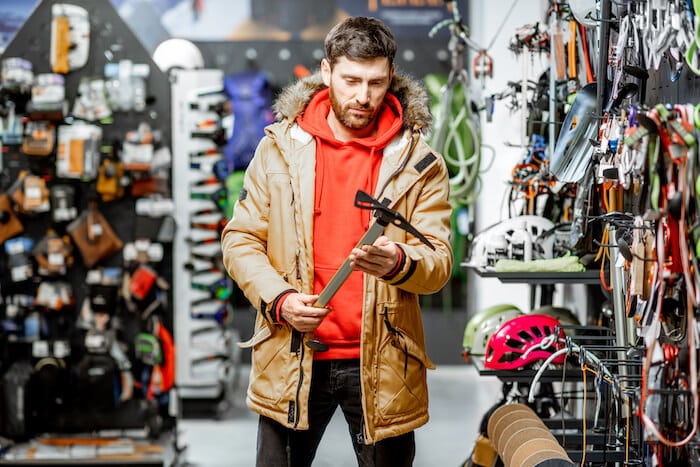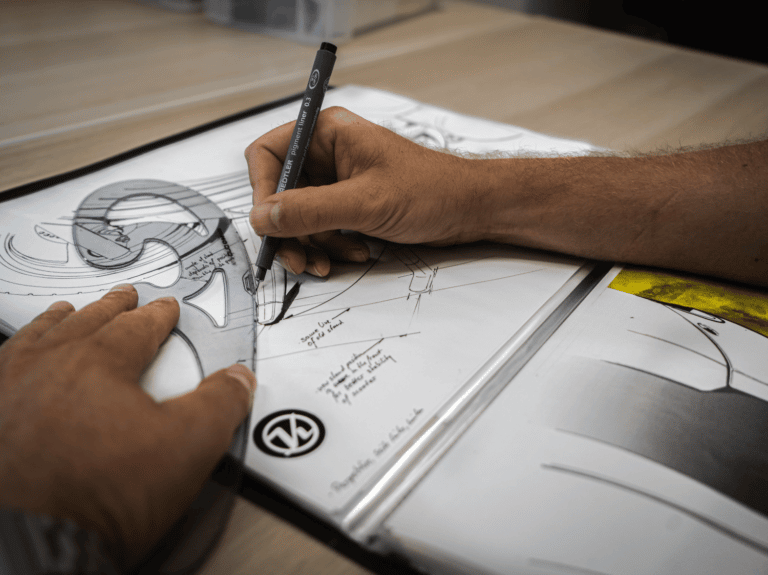As COVID-19 caused people to hole up inside and simultaneously take up new hobbies over the last few years, the sporting goods industry saw major growth. Peloton sales skyrocketed as people looked for a way to stay fit from home. Sports like pickleball found a new audience as friends sought a socially distanced group activity to get them outside. Everything from golf balls to AI-enhanced treadmills saw increased sales. Consumers looked for ways to occupy their extra time, tilt their work-life balance towards “life,” and dedicate themselves to being healthier—and sports equipment manufacturers have had to keep up.
A $126 billion market, sports equipment includes a diverse range of products including athletic footwear, exercise equipment, athletic apparel, and any products that people use to take part in indoor or outdoor sports and activities.
The sportswear portion of the industry alone is expected to grow 8-10% each year from 2022 through 2025, according to a recent industry study. Sporting goods manufacturers that want to take advantage of growth across products need to plan properly and execute better than their competition.
In this article, we will share four fundamental characteristics we see in how successful sporting goods companies carry out product development. Let’s get out on the road and run through these suggestions that will help your company set a personal record.
4 Areas to Focus for a Competitive Edge When Manufacturing Sporting Goods

These four critical areas of focus also allow your product development team to be nimbler and faster, showing where the ball is headed so you can catch it. And although every product is different, successful ones are created with four key factors in mind: design, material, performance, and quality.
1. Design: Define Winning Sporting Goods
Sports equipment demands good design because it is both a consumer product and a performance product. No one spends more on a toaster because they hope it will help their kid make the varsity team, but they will put out the cash to get them a better lacrosse stick.
Modern fitness equipment stands out as an example of how design has transformed a class of products. No longer clunky and utilitarian, modern gym equipment borders on art. Any manufacturing company trying to stand out must recognize that form, function, and style drive consumer demand.
Sporting goods are also about how you look while using the equipment, especially in the sub-category of sportswear. Companies like Nike build design thinking in every aspect of product design. Standard industrial design concepts like thorough market research, ergonomics, styling, design for manufacturing, and prototyping all play a role in good design.
2. Material: Provide a Competitive Advantage

To get a competitive advantage with your products, you need to investigate and understand all of the available material options. Your material choices impact every aspect of your product. If you’re making sportswear, your material must stretch and return to its original shape and withstand moisture and sunlight. And it must do all of this while looking good. Picking the right materials among the thousands available could make or break your product.
Material selection also impacts the sustainability of your product. What materials you use determine where the raw materials come from, the carbon and chemical footprint created when those raw materials are turned into usable substances, as well as the environmental impact when the product is disposed of. This choice is the first step in creating a smart and sustainable supply chain.
3. Performance: Give Customers That Special Something
Remember when you got a new pair of sneakers as a kid and you sprinted around the playground knowing you could run faster and jump higher? Today’s sporting goods consumers have the same response to new products. Because that kid never leaves us, the desire to have a competitive edge plays an outsized role for sporting goods and impacts almost every aspect of product design. Designing for performance advantages can set your product above the competition and feed your marketing strategy.
The most obvious type of performance is improving the customer’s performance. For fitness and home gym equipment, this may be helping them build muscle mass faster or allowing them to safely burn more calories in less time. For sports shoes, it may be less shock to the foot, better arch support, and of course, being able to run faster and jump higher.
A recent study of consumers purchasing sportswear and sports shoes found that they put comfort and fit above durability, quality, price, and appearance. So when you’re making design choices for a new line of biking shorts, for example, make sure you go with options for padding and fit that adapt to a wide range of body types to deliver on comfort for long rides.
4. Quality: Ensure Your Equipment Delivers on Expectations
Design, materials, and performance all come together to create quality products. By their nature, sporting goods don’t sit on the bench: They’re out on the field catching and throwing. If you don’t take quality seriously and your product breaks down on the slopes, the trail, the field, the court, or even in the home gym, your customers won’t just throw it away and get another one. They’ll probably change brands.
High-quality equipment feeds into athletic performance. If the quality is not there, then the performance you designed for doesn’t show up to the game. Quality sports equipment delivers better comfort, longer play, enhanced safety, and greater accuracy. Something as basic as a snowboard is a great example. A quality snowboard enables its owner to hit the slopes for a whole day and learn new tricks without getting hurt or sore from a poorly made board. And sports apparel that can’t stand up to the wear and tear of physical activity never leaves the garage or the locker room.
Show Up With the Right Team

The good news is you don’t have to pick from a playground lineup to build your team. Gembah enables designers and factories to collaborate on the product creation process from ideation through sourcing and fulfillment. Our in-house experts are connected to a world-class network of sports and outdoor product designers and factories with experience covering the entire sporting goods industry.
From athletic equipment to camping gear, shoes to rackets, and weightlifting equipment to inline skates, our network, platform, and experts are ready to not only help build your team but also coach from the sidelines. We’ll also get out on the field with you when you put us in the game. Reach out to our experts now and let’s make your next sports equipment product a home run.



